
Vegetables are an essential part of a balanced diet. Packed with vitamins, minerals, and fiber, they provide a wide range of health benefits. These plant-based food items not only contribute to maintaining a healthy weight, but also support overall well-being. With countless varieties available in different colors, shapes, and flavors, vegetables offer a versatile and delicious addition to any meal.
Exploring Vegetable Varieties
With a plethora of options to choose from, exploring the world of vegetable varieties can be an exciting and flavorful journey. Each vegetable possesses its own unique characteristics, taste profiles, and health benefits. Let’s delve into some notable vegetable varieties that you can incorporate into your meals for a delightful culinary experience.
Root Vegetables
Root vegetables are a diverse group of vegetables that grow underground and provide a rich source of nutrients. From the vibrant orange of carrots to the earthy goodness of potatoes, root vegetables offer a wide range of flavors, textures, and culinary possibilities. Whether roasted, mashed, or used in soups and stews, these underground treasures add depth and hearty goodness to any dish.
Carrots: These vibrant orange vegetables are not only visually appealing but also packed with beta-carotene, an antioxidant that promotes healthy eyesight. Enjoy them raw in salads or cooked in stews and soups for a sweet and earthy flavor.
Beets: These vibrant root vegetables not only add a pop of color to your plate but also offer a sweet and earthy flavor. Roast them with a touch of balsamic vinegar for a caramelized and intensified taste. You can also grate them and use them raw in salads or pickle them for a tangy and crunchy addition to sandwiches and charcuterie boards.
Turnips: With their crisp texture and slightly sweet and peppery flavor, turnips are a versatile root vegetable that can be enjoyed in a variety of ways. Roast them with a drizzle of olive oil and a sprinkle of herbs for a deliciously caramelized side dish.
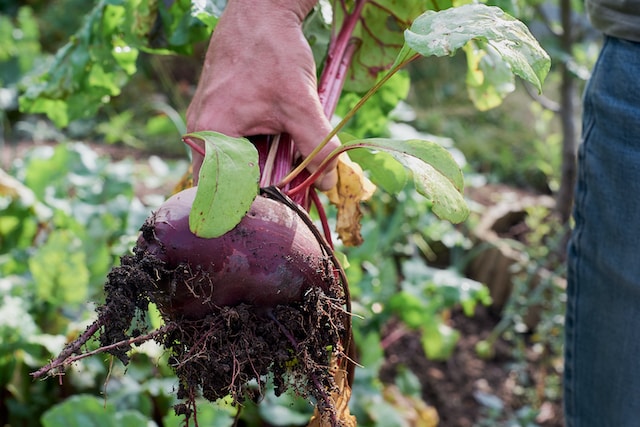
You can also mash them with butter and seasonings for a unique twist on traditional mashed potatoes.
Parsnips: Often overlooked but undeniably delicious, parsnips have a slightly sweet and nutty flavor that becomes even more pronounced when roasted. Toss them with olive oil, garlic, and thyme, and roast until they are tender and golden brown. Their unique taste and creamy texture make them a wonderful addition to soups, stews, and purees.
Celery Root: Also known as celeriac, this root vegetable may be ugly on the outside, but it’s a hidden gem in terms of flavor. With a distinctive taste that is similar to celery and parsley, celery root can be used in a variety of dishes. Grate it and mix it with mayonnaise and lemon juice for a refreshing slaw or roast it with herbs and spices for a hearty side dish.
Onions and Garlic: While technically not root vegetables, onions and garlic are essential ingredients in countless savory dishes. Their pungent and aromatic flavors are the building blocks of many cuisines around the world. Whether sautéed, caramelized, or roasted, onions and garlic add depth and complexity to soups, stews, sauces, and so much more.
Potatoes: Versatile and comforting, potatoes come in a range of types such as russet, Yukon gold, and sweet potatoes. Whether mashed, roasted, or fried, they add a hearty element to various dishes and provide an excellent source of potassium and vitamin C.

Leafy Greens
Leafy greens are a verdant and nutritious group of vegetables that provide a burst of freshness and vitality to any meal. These vibrant greens are not only visually stunning but also offer a multitude of health benefits. From robust flavors to delicate textures, leafy greens are a versatile addition to a variety of culinary creations. Let’s explore some of the most popular leafy greens and uncover their unique attributes.
Lettuce: Lettuce, the staple of salads, comes in a variety of types, each with its own distinct characteristics. From the crisp and slightly bitter iceberg to the tender and nutty butter lettuce, there is a lettuce variety to suit every palate. Whether used as a base for salads, wrapped around savory fillings, or layered in sandwiches, lettuce adds a refreshing crunch and a subtle sweetness.
Spinach: As mentioned earlier, spinach is a nutrient powerhouse, packed with vitamins and minerals. Its tender leaves boast a slightly bitter taste that adds depth to various dishes. Whether enjoyed raw in salads, blended into smoothies, or cooked in stir-fries, spinach provides a vibrant green color and a wealth of nutrients.
Swiss Chard: This leafy green vegetable with its vibrant rainbow stems is a visual delight. Swiss chard offers a mild and slightly earthy flavor, making it a versatile ingredient in both raw and cooked dishes. Sauté it with garlic and olive oil, mix it into omelets, or use it as a filling for stuffed pastas – the possibilities are endless.
Kale: Kale has gained immense popularity in recent years, thanks to its robust flavor and exceptional nutritional value. Its slightly peppery taste adds depth to a variety of dishes. Whether used raw in salads or baked into crispy chips, kale brings a unique texture and taste to any culinary creation.
Arugula: Arugula, also known as rocket, is a peppery leafy green that adds a zesty kick to dishes. With its distinctive flavor profile, arugula is a favorite addition to salads, sandwiches, and pizza toppings. Its delicate leaves provide a refreshing bite and complement a variety of flavors.
Cruciferous Vegetables
Cruciferous vegetables, a family of vegetables known for their cross-shaped flowers, offer a plethora of health benefits and culinary possibilities. From the vibrant green florets of broccoli to the versatile white flesh of cauliflower, these vegetables bring both flavor and nutritional value to the table.
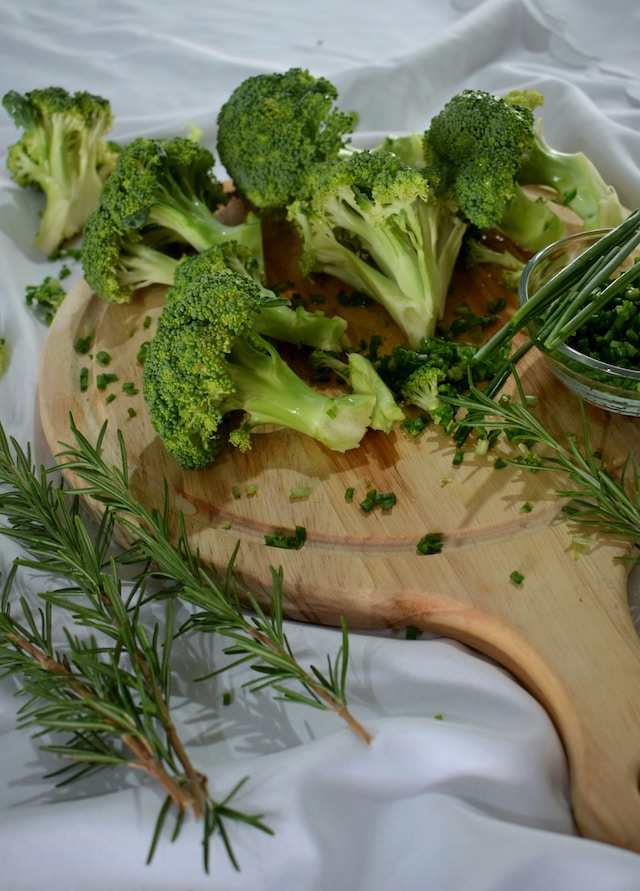
Broccoli: Broccoli, with its vibrant, tree-like appearance, is a staple in many households. Its crisp texture and slightly bitter taste add depth and freshness to a variety of dishes. Whether steamed, roasted, or added to stir-fries and soups, broccoli’s satisfying crunch and refreshing taste make it a versatile ingredient. Additionally, this vibrant vegetable provides an abundance of fiber, vitamin C, and folate, making it a nutritious addition to any meal.
Cauliflower: Cauliflower, with its pale, cauliflower-shaped head, has gained immense popularity in recent years. Its versatility and ability to mimic starchy carbs have made it a favorite among those seeking low-carb and nutrient-rich alternatives. Cauliflower can be finely riced and used as a substitute for rice or mashed to create a creamy, satisfying side dish. Roasting cauliflower brings out its natural sweetness and provides a delightful caramelization. Beyond its taste and culinary possibilities, cauliflower is an excellent source of vitamin C, fiber, and contains compounds that may have cancer-fighting properties.
Brussels Sprouts: Brussels sprouts, the small green cabbage-like vegetables, have undergone a revival in recent years as chefs and home cooks have discovered their unique flavor and versatility. When cooked properly, Brussels sprouts offer a delicate texture with a slightly nutty taste. Blanched and then quickly sautéed or roasted, Brussels sprouts develop caramelization and a satisfying crunch, elevating them to a whole new level of deliciousness. This cruciferous vegetable is also rich in fiber, vitamins, and antioxidants, making it a nutritious addition to any meal.
Cabbage: Cabbage, with its tightly packed leaves and various shades of green and purple, is a staple in many cuisines around the world. From coleslaws to sauerkraut, cabbage provides a crisp and refreshing texture. When cooked, it becomes tender and develops a sweeter flavor. Whether enjoyed raw in salads, braised in stews, or stir-fried in Asian-style dishes, cabbage offers not only a burst of color but also a host of health benefits. It is an excellent source of vitamin C, vitamin K, and fiber.
Podded Vegetables
Podded vegetables, such as green beans and peas, offer a delightful burst of flavor and texture to a variety of dishes. These versatile vegetables come in vibrant shades of green and provide a nutritious addition to meals. From stir-fries to salads, podded vegetables bring a fresh and crisp element to culinary creations. Let’s explore the culinary possibilities of these delightful gems and learn how to make the most of their unique characteristics.
Green Beans: Crisp, bright green, and bursting with flavor, green beans are a delightful addition to any plate. These fiber-rich vegetables can be blanched, sautéed, or steamed, providing a satisfying crunch alongside essential nutrients like vitamins A and C.
Peas: Deliciously sweet and loaded with protein, peas are a garden-fresh delight. Whether enjoyed fresh or cooked, peas offer a delicate texture and an excellent source of vitamins A, C, and K. They can be added to salads, pasta, or served as a delightful side dish.
Edamame: Edamame are young soybeans that are harvested before they fully mature. They are still in their pods and are typically boiled or steamed before being shelled. These vibrant green beans have a mild, nutty flavor and are often enjoyed as a snack or added to salads, stir-fries, and grain bowls.
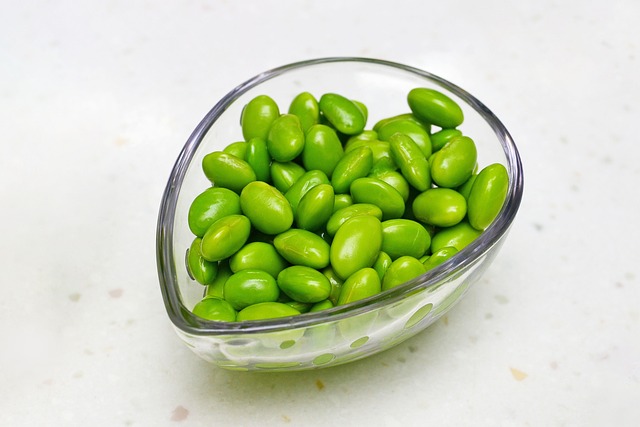
Peanuts: While peanuts are technically legumes, they are also considered podded vegetables due to their peanut shells. Peanuts are packed with protein, healthy fats, and a deliciously nutty flavor. They can be enjoyed roasted, boiled, or ground into creamy peanut butter. Whether used in savory dishes or sweet treats, peanuts add a delightful crunch and depth of flavor.
Snow Peas: Snow peas, also known as sugar snap peas, have a crisp and sweet flavor that makes them a popular addition to stir-fries and salads. Unlike other podded vegetables, snow peas are often enjoyed with their edible pods intact. Their thin and tender pods provide a satisfying crunch and a burst of freshness.
Fava Beans: Fava beans, also known as broad beans, are hearty and nutritious podded vegetables. They have a distinct earthy flavor and a smooth texture. Fava beans are often used in Mediterranean and Middle Eastern cuisines, where they can be found in dishes such as ful medames or added to salads and pasta dishes.
Lima Beans: Lima beans, also known as butter beans, are creamy and buttery-textured podded vegetables. These beans have a mild and slightly nutty flavor. They can be enjoyed cooked in soups, stews, or casseroles, or used to make creamy dips or spreads.
Chickpeas: Chickpeas, also known as garbanzo beans, are a versatile and popular podded vegetable. These legumes have a nutty taste and a slightly grainy texture. Chickpeas are used in a variety of dishes, such as hummus, falafel, curries, and salads. They are also a great plant-based protein source.
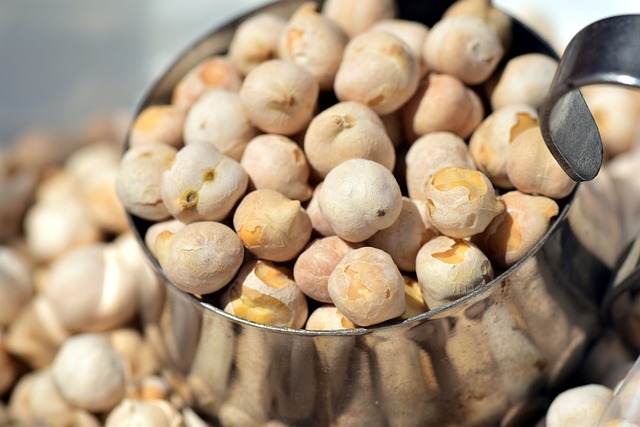
Vegetables in Culinary Techniques
Vegetables play a crucial role in various culinary techniques, enhancing the flavors, textures, and visual appeal of dishes. Whether utilized as a main ingredient, a side dish, or a garnish, vegetables bring a vibrant and fresh element to the art of cooking. Let’s explore how different culinary techniques can showcase the versatility of vegetables.
Roasting
Roasting vegetables is a popular method that brings out their natural sweetness and imparts a delightful caramelization. Start by preheating the oven and cutting vegetables into equal-sized pieces for even cooking. Toss them in olive oil, sprinkle with your favorite herbs and seasonings, and spread them on a baking sheet. Roast at a moderate temperature until they are tender and slightly golden. This technique intensifies the flavors and transforms vegetables like Brussels sprouts, carrots, and bell peppers into delectably savory delights.
Stir-frying
Stir-frying is a quick and vibrant cooking technique that maintains the crunch and vibrant colors of vegetables. The key is to heat a wok or a skillet on high heat, add a small amount of oil, and quickly toss in bite-sized vegetable pieces. Stir-fry them for a few minutes until they are crisp-tender. The result is a dish bursting with freshness and a perfect combination of textures. Colorful vegetables like bell peppers, snap peas, and bok choy work exceptionally well in stir-fry dishes.
Grilling
Grilling vegetables adds a smoky and charred flavor that elevates their taste to new heights. Preheat the grill and slice vegetables into uniform pieces to ensure even cooking. Lightly coat them in olive oil and season with salt, pepper, and spices of your choice. Place the vegetables directly on the grill grates and cook until they have well-defined grill marks and are tender yet still slightly firm. Grilled vegetables like eggplant, zucchini, and portobello mushrooms make fantastic additions to salads, sandwiches, or platters.
Steaming
Steaming vegetables is a gentle cooking method that preserves their nutrients, colors, and delicate flavors. Bring a pot of water to a simmer and place a steamer basket or a colander on top. Arrange the vegetables in a single layer and cover the pot. Steam until they are tender yet retain their vibrant hues and natural crispness. Steamed vegetables such as broccoli, cauliflower, and asparagus can be enjoyed as a simple side dish or incorporated into stir-fries, soups, or grain bowls.
Nutritional Benefits of Vegetables
Vegetables are not only delicious and versatile, but they also offer a multitude of health benefits. Packed with essential vitamins, minerals, and fiber, vegetables contribute to overall well-being and support a healthy lifestyle. Let’s unlock the nutritional benefits of vegetables and discover why they should be a staple in our diet.
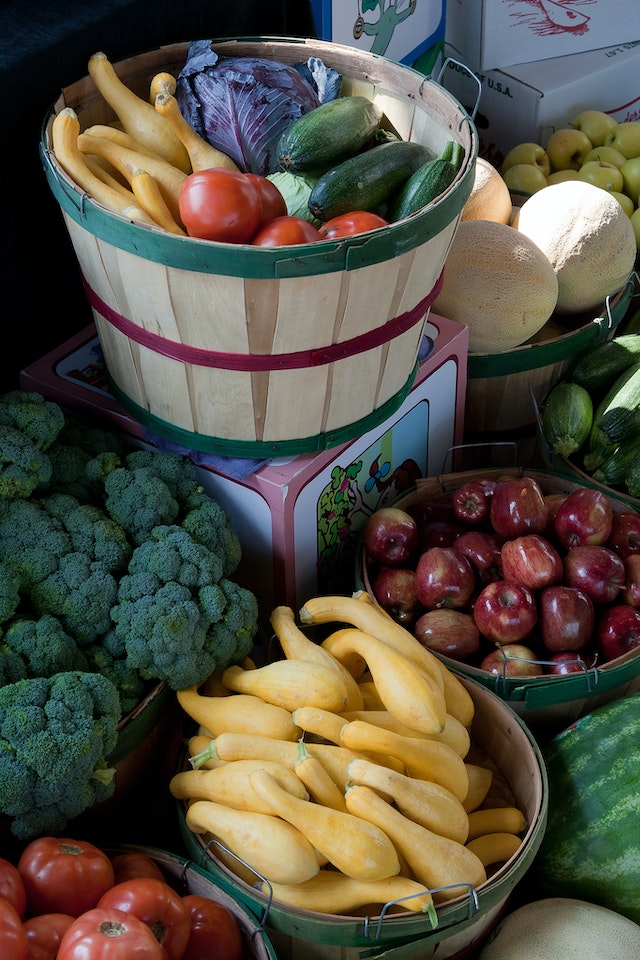
Vitamins: Vegetables are a rich source of essential vitamins that are crucial for various bodily functions. Vitamin C, found in vegetables like broccoli, bell peppers, and kale, helps boost the immune system and supports healthy skin. Vitamin A, present in carrots, sweet potatoes, and spinach, is important for maintaining good vision and a healthy immune system. Leafy greens like Swiss chard and lettuce are abundant in vitamin K, which is essential for blood clotting and bone health.
Minerals: Vegetables are a natural source of minerals that play vital roles in our body. Potassium, found in vegetables such as potatoes, sweet potatoes, and leafy greens, helps maintain healthy blood pressure levels and supports proper muscle function. Magnesium, present in leafy greens, broccoli, and Brussels sprouts, is important for energy production, nerve function, and healthy bones.
Fiber: One of the key benefits of vegetables is their high fiber content. Fiber not only promotes digestive health but also helps control blood sugar levels and cholesterol levels. Vegetables like broccoli, Brussels sprouts, and green peas are excellent sources of dietary fiber that can aid in weight management and support a healthy gut.
Antioxidants: Many vegetables are rich in antioxidants, compounds that help protect the body against free radicals and oxidative stress, reducing the risk of chronic diseases. Tomatoes, for example, contain the antioxidant lycopene, which has been linked to a reduced risk of heart disease and certain types of cancer. Cruciferous vegetables like broccoli and cauliflower are high in sulfur-containing compounds that have been found to have anti-cancer properties.
Hydration: Many vegetables have a high water content, making them an excellent choice for staying hydrated. Cucumbers, lettuce, and zucchini are hydrating vegetables that can contribute to overall hydration and help maintain healthy skin.
Low in Calories: In addition to their nutritional value, vegetables are generally low in calories, making them an ideal choice for weight management. By incorporating a wide variety of vegetables into your diet, you can enjoy filling and flavorful meals without compromising your calorie intake.
It’s important to note that different vegetables offer different nutritional profiles, so incorporating a mix of vegetables into your diet ensures a diverse range of nutrients. Whether you choose to enjoy vegetables raw, steamed, roasted, or stir-fried, they are a valuable addition to any meal, nourishing both your body and your taste buds.
Vegetables are not only essential for promoting a healthy lifestyle but also offer a world of culinary exploration. From the diverse range of root vegetables to the refreshing leafy greens, and the versatile podded vegetables, each vegetable variety has its own unique characteristics, flavors, and health benefits. By exploring different culinary techniques like roasting, stir-frying, grilling, and steaming, we can unlock the full potential of vegetables and create delicious and nutritious meals. So, let’s embrace the vibrant world of vegetables and elevate our culinary experiences to new heights.
